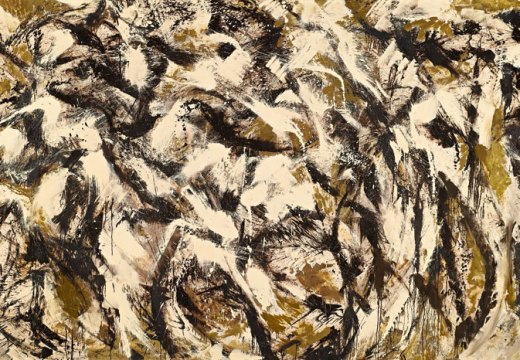When it comes to the representation of women artists in major art institutions, the figures are quite bleak: according to the National Museum of Women in the Arts (citing data from 2012 and 2014), work by female artists makes up only three to five per cent of major permanent collections in the US and Europe, and women around the world continue to face significant barriers to success within the arts sector. But a number of high-profile institutions are actively attempting to redress gender disparity in their collections, exhibitions, and leadership. On International Women’s Day, we celebrate a few of the most noteworthy recent initiatives around the world. For more about the underrepresentation of women in historical collections, see Lily Le Brun’s report in Apollo from 2015.
Uffizi galleries to host major solo exhibitions of female artists
In an effort to celebrate the achievements of more female artists from history, the Uffizi will stage a major exhibition dedicated to Florentine Renaissance painter Suor Plautilla Nelli (1523–87), opening on International Women’s Day (8 March). This will be the first in a series of annual exhibitions highlighting art made by women. The Uffizi’s sister gallery, the Pitti Palace, is also supporting the initiative by staging an exhibition of self-portraits by the late Austrian artist Maria Lassnig (1919–2014).
The Museo del Prado stages its first solo exhibition of a female painter
The Florentine galleries are not the only major European institutions that are drawing attention to the neglected women of art history. The Museo del Prado, which opened its doors nearly 200 years ago, recently held its first exhibition dedicated to a female painter, the Flemish still-life artist Clara Peeters. Peeters is one of the 41 women represented in the museum’s permanent collection, compared to more than 5,000 male counterparts.
Tate devotes more gallery space to female artists
Frances Morris, the director of Tate Modern, has been particularly vocal in her support for women in the arts, devoting significantly more space to female artists in the gallery’s new Switch House extension. Half of the solo artist displays in the new building are devoted to female artists including Louise Bourgeois and Suzanne Lacy, while women make up 36 per cent of those featured across the entire collection display (an increase on previous years). Last year, Tate Britain acquired its earliest work by a female artist, Portrait of an Unknown Lady (1650–55) by Joan Carlile.
The rise of women museum directors
Maria Balshaw, largely credited for the recent successes of both the Manchester Art Gallery and the Whitworth, recently became the first female director of Tate. She is in good company: last year, Barbara Jatta and Jennifer Scott were also the first women to be appointed to lead the Vatican Museums and the Dulwich Picture Gallery respectively. Karin Hindsbo was appointed director of the National Museum in Norway last month, and most recently Laurence des Cars has been named as the new chief of the Musée d’Orsay. According to Le Monde, des Cars is only the second woman curator to head a major Paris museum, alongside Sophie Makariou at the Musée Guimet.
Blockbuster retrospectives for women artists in New York
New York’s major museums are hosting a number of high-profile retrospectives this year. The Met Breuer began 2017 with a Marisa Merz exhibition, and will also host a Lygia Pape show opening this month. One of the Met’s biggest exhibitions of the year will honour Commes de Garçons’s Rei Kawakubo – this will be the first monographic show at the museum to focus on a living designer since YSL in 1983. In April the New Museum hosts the first New York museum survey of Italian artist Carol Rama, and the hugely anticipated Louise Lawler retrospective opens at MoMA.
The return of #5WomenArtists
The National Museum of Women in the Arts have launched their #5WomenArtists campaign for a second year, encouraging social media users to challenge the disparity between male and female artists and to shed light on those who have been written out of art history. Last year nearly 400 museums and galleries participated, alongside more than 10,000 social media users. This year more than 150 institutions across the US have already signed on as contributors to the campaign.
Women artists win big in 2016’s art prizes
Three out of the four shortlisted artists for the Turner Prize last year were women, and in the end it was Helen Marten that took home the prize (she also scooped the inaugural Hepworth Prize for Sculpture just weeks later). The Archibald Prize, one of the most important portraiture awards in Australia, achieved gender parity among it finalists this year (though with a conspicuously male set of sitters), and was ultimately won by Louise Hearman. Finally, France’s inaugural AWARE (Archives of Women Artists, Research and Exhibitions) prize was awarded to Laëtitia Badaut Haussmann and Judit Reigl in January, with support from France’s cultural ministry.
Unlimited access from just $16 every 3 months
Subscribe to get unlimited and exclusive access to the top art stories, interviews and exhibition reviews.














![Masterpiece [Re]discovery 2022. Photo: Ben Fisher Photography, courtesy of Masterpiece London](http://www.apollo-magazine.com/wp-content/uploads/2022/07/MPL2022_4263.jpg)
It’s time for the government of London to return to its rightful home